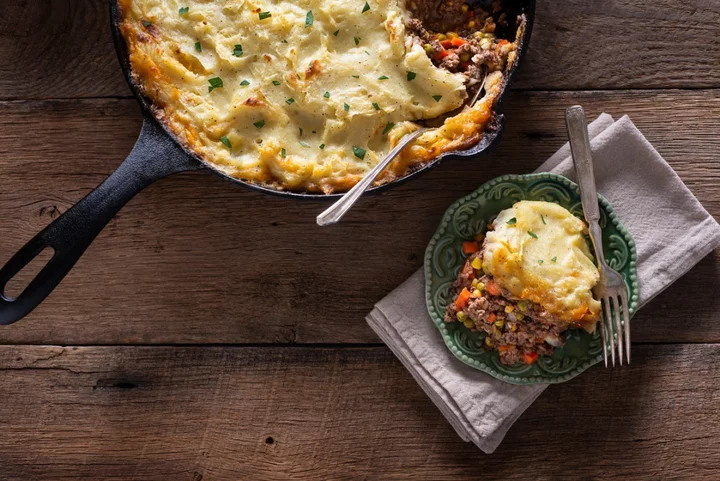
People crave comfort food more during the winter season
People will be spending 30 per cent longer in the kitchen this winter compared to the summer months – as they crave comfort foods to keep them warm. A study of 2,000 adults who cook at home found they anticipate spending 72 hours rustling up meals from December to February, but just 55 hours from June to August. And 40 per cent spend more time cooking in the cooler months than they do during any other season. Among the reasons for this upward trend are a craving for more hearty, comforting dishes (65 per cent), wanting to feel warm and cosy (42 per cent), and the kitchen being the warmest room in the house (32 per cent). It also emerged 51 per cent are concerned about the impact more time spent in the kitchen will have on their household bills. As a result, 79 per cent are keen to learn more energy-efficient recipes. The research was commissioned by Smart Energy GB, which has teamed up with Michelin-trained chef, Poppy O’Toole, dubbed TikTok’s ‘Potato Queen’, who has crafted a selection of energy-efficient recipes and hacks She said: “Winter is one of my favourite seasons when it comes to the wealth of hearty, comforting recipes you can create - especially if they include potatoes. “And when the weather is colder and the days shorter, what better way to spend time than cooking your favourite winter warmers? “These dishes can take more time and energy to make, which is why I’m excited to show it doesn’t always have to be this way. “I’ve developed a recipe range of energy efficient takes on classic favourites - all with the help of a smart meter.” The study also found 25 per cent of those with a smart meter plan to monitor their in-home display more carefully during the winter. Of those, 42 per cent are doing so because it gives them a greater sense of control over their household bills, while 40 per cent want to reduce their energy use when cooking. One in five of all adults are searching for more cost-saving cooking methods, and 77 per cent said being mindful about energy use when cooking is important to them. It also emerged the typical home cook will use their oven for the equivalent of nearly three days (64 hours) from December to February, and their hob for nearly two days (46 hours). This amounts to at least £18 in energy usage in the kitchen alone between December and February, according to data from Smart Energy GB and Energy Saving Trust. A traditional roast, shepherd’s pie and sausage and mash are among the most popular meals made when then temperature plummets. The study, conducted via OnePoll, also found 39 per cent are using more kitchen appliances in their cooking endeavours than ever before. The oven was voted the top winter appliance of choice (43 per cent), with the economical air fryer (27 per cent) also featuring in the top 10. Victoria Bacon, director at Smart Energy GB, said: “As we head into the colder, winter months where many people spend more time in the kitchen, small changes to the way we cook can make a tangible difference to the amount of energy that’s used. “Smart meters are installed at no extra cost by your energy supplier and come with a handy in-home display which allows you to track your usage in near-real time. “These warming recipes created by Poppy are the perfect thing to help households rustle up hearty dish, while keeping an eye on energy use.” Read More Watch live as gun salutes mark King Charles III’s 75th birthday Woman defends her $7,000 cheese board How to host a dinner party for under £2 per portion Man shows the increase in grocery prices since 2019 Starbucks customer reveals comical result of her request for half sandwich Waitrose Christmas advert features Graham Norton cameo at kid-free festive party
2023-11-14 20:23

Polish left submits bills to liberalise abortion law
Poland's leftists, part of a coalition in control of the new parliament, said on Tuesday they had submitted two bills to liberalise one of...
2023-11-14 19:23
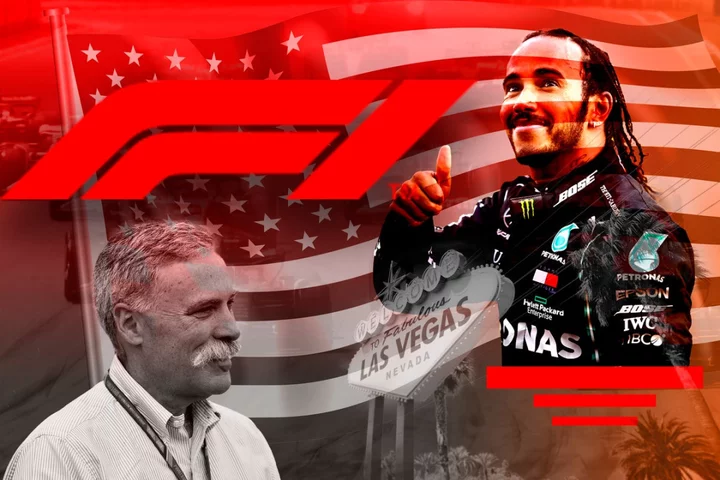
How Formula 1 cracked America
The setting is the Indianapolis Motor Speedway: home to the world-famous Indy 500 race. Ahead of the 2005 United States Grand Prix, at a circuit modified for Formula 1, ITV pundit and former F1 driver Martin Brundle is interviewing the sport’s long-term supremo and commander-in-chief Bernie Ecclestone on the grid. And you may well say, nothing unusual about that. What is more unusual is Brundle’s direct, bordering on combative, line of questioning. A huddle of camera crew and journalists huddle around, eager for answers. Because F1’s only race in the land of the free is about to become a farce. Out of 20 cars, only six take to the start line. For the sport and its tempestuous 55-year relationship with the US, it is the ultimate moment of absurdity. “The future of Formula 1 in America?” asks Brundle. “Not good,” Ecclestone replies. It is a far cry from where the sport is stateside now. Formula 1 is pushing boundaries and breaking the glass ceiling in a manner which would be unambiguously imposing if it wasn’t in the United States. There are now three races, with this week’s grand prix on the Las Vegas strip following on from a highly successful rebirth of the US Grand Prix in Austin and a street track in Miami. After 75 races at 11 different American venues, F1 has finally cracked the American code. “At my kids’ soccer game, you’ll see someone with a Red Bull shirt on,” says Scott Speed, a Californian native who raced in F1 for two years in the 2000s. “It’s been a long time coming but there is a noticeable difference when you see people walk around in F1 apparel. That’s very different to when I was in the sport.” But sometimes to understand the scale of the current highs, you have to revisit the lows of yesteryear. That ludicrous weekend in Indianapolis 18 years ago was, in his own words, a “super huge” weekend for Speed. He was testing for Red Bull at his home race, a week on from his first F1 test in Canada, but his team along with six others would not be racing come Sunday. Fourteen of the cars were using Michelin tyres which had resulted in several tyre failures in practice and qualifying at the final corner, including a heavy shunt for Toyota’s Ralf Schumacher, due to the abrasive nature of the high-speed banked turn. Installing a chicane to reduce speeds was suggested and rejected on the grounds that it would be unfair to the Bridgestone tyre runners – which included Michael Schumacher’s Ferrari team. Unable to take the risk of a serious accident, all Michelin cars did not start the 73-lap race. Schumacher won the six-car race to a chorus of boos in the grandstands. “The penalty if you went off there [turn 13] was just too hot, it was a big shunt,” Speed recalls. “I remember in my meeting with the engineers, they said ‘your tyre was two laps from blowing up as well.’ That was a really surreal feeling and then I had a big feeling of relief. It was very scary knowing I’d have been in the same situation that Ralf [Schumacher] was in.” F1 did race in Indiana again, fulfilling its contract for two more years. But Lewis Hamilton’s win in 2007 was F1’s last venture at a track simply inadequate for both the basics and spectacle of the sport. One of F1’s lowest moments had been the catalyst for a period of nonexistence, with the sport undergoing a four-year period of inactivity across the Atlantic. Brundle closed that Ecclestone episode with one of his most famous lines. Trundling over to speak to the chief’s then-wife Slavica, he asks: “Mrs Ecclestone, this needs a women’s intuition on this don’t you think?” She refuses to comment. “I think you should have something to say,” quips Brundle. “And give him a jolly good slapping.” *** There have been years of ingenuity, dissatisfaction and scandal ever since the United States first hosted a race in Formula 1 in the sport’s inaugural year in 1950. Back then, the Indy 500 was classed as a championship race. In the decades since, Ecclestone and his team of millionaire race-makers had flirted ferociously with the American market – a crowded field of ultra-popular US sports, college competition and their own brand of motorsport with Indy Car and NASCAR. But the first signs of a rebirth after the Indiana farce came just over a decade ago. The composition and creation of the Circuit of the Americas (COTA) in Austin, Texas, gave F1 a lifeline in the United States. “They finally got their location right,” Speed tells The Independent. “Austin is a booming demographic, it’s like having a grand prix in New York. You’re in close proximity to a lot of fans and they’ve built a fantastic racetrack. That helps a lot, it’s a really special circuit.” But it was still merely a foothold; hardly the stamp it craved. A proposed race in New York, with the Manhattan skyline and Hudson River in the backdrop, was crafted and discarded. COTA’s attendance of 265,000 at the inaugural race in 2012 dropped consistently to 224,000 by 2015. But Ecclestone’s 40-year stranglehold on the sport was loosening. New suitors showed their hand and Liberty Media – the world’s biggest sports media company – completed an $8billion takeover in January 2017. What followed was a revolutionary revamp of Formula 1, its leaders and, most significantly, its output. Liberty took full control, revitalising the sport’s social media output and relaxing out-of-date restrictions on teams publishing their own content. The immediate target demographic was young people and expanding the audience beyond its traditional European borders. But they still lacked a crown jewel. Enter Netflix and production company Box to Box Films. The US has been ahead of the curve in the department of fly-on-the-wall sports documentaries, with Hard Knocks on HBO and more recently All or Nothing on Amazon Prime proving popular with sports fans stateside. Now, F1 was making their own dive into the arena with Drive to Survive. “Fans have a lot of games to watch live, highlights to see, stories to read – all of that,” says sports media expert Brian Moritz. “But sports fans are typically insatiable in their desire for content, right? There’s never too much. “Going behind the scenes is exciting for fans. And I do think F1 was ahead of the curve in terms of taking a sport that Americans didn’t know or care a ton about and getting them to care. When you haven’t followed a sport your entire life, it can be hard to jump into a sport as an adult. I think Drive to Survive provided an entry point for American fans into the sport.” The growth of the series, year-on-year, has been staggering. Since the show’s first season in 2019, the viewership has increased by more than 350,000. F1’s audience for live races has skyrocketed to above one million per-race. Cards fell favourably too: the Covid pandemic meant more people were stuck at home browsing and streaming online, while the 2021 title battle for the ages between Hamilton and Max Verstappen engaged a wider range of people too. The “Man on Fire” episode in season three – when Romain Grosjean’s car dramatically bursts into flames in Bahrain – is rated the most popular episode, according to IMDB. “F1 has this kind of exotic feel to it,” adds Moritz. “It’s primarily European and with all the money, glitz and glamour… I think that appeals to American viewers. Never underestimate the appeal of fast cars and rich people.” It would be a form of content that became almost a necessity when the professional tennis and golf tours went a similar way earlier this year with their first Netflix shows: Break Point and Full Swing. F1 has shown the path for all sports to draw in more engagement from an American market who, unequivocally, live and breathe for sport – but perhaps absorb the personalities of the stars and the elaborative storylines even more. Never underestimate the appeal of fast cars and rich people.” Drive to Survive’s impact is undeniable. But for Formula 1 and Liberty, there was still more to strive for – and two of the sport’s biggest stars has their sights set on unparalleled glitz and glamour. When asked in Australia in 2017 what their one wish from the sport’s new owners would be, Red Bull’s Aussie driver Daniel Ricciardo and Hamilton did not hesitate. “Race in Vegas!” beamed Ricciardo. “Miami, race,” added Hamilton. It was met with laughter among the media assembled. Even the drivers themselves perhaps were speaking more in hope than expectation. But boy how F1 have delivered. Miami was first proposed in 2018 and after tossing and turning over location and logistical plans for a few years, the sport landed on a custom-made street track around the city’s Hard Rock Stadium. It debuted last year and while initial impressions of the circuit and the racing have been mixed at best, it gives F1 a marquee event on the East Coast. And with Austin in the centre of the country now attracting 400,000+ spectators, there was one obvious slot left to fill. *** So to Vegas, where slots are at every turn. F1 has tried and failed in Sin City before, toiling in an ineffective track in the car park of the Caesars Palace hotel for two years in the 1980s. But a race down the iconic Las Vegas Boulevard – the strip – was former F1 CEO Chase Carey’s dream concept when he took over the sport from Ecclestone. Indeed, Carey insisted F1 needed to start arriving in “destination cities.” But while the pandemic delayed plans, it didn’t derail them. F1 has spent $500m on a state-of-the-art pit building, the length of three NFL fields. Cars will zoom around the city’s new $2.3bn MSG Sphere. The sport is expecting to bring in $1.28 billion for the city in year one alone. There has been anger and frustration among locals and tourists in recent months due to construction and road closures but the vision of an unparalleled ambition is now on the cusp of its grand opening. “It will be the biggest race in racing history,” famous American ex-driver Willy T Ribbs said. “The most talked about and the most glamorous. Vegas will be the one which is going to take Formula 1 in this country to a bigger level.” Yet where does F1 in the United States go from here? Like any sport, the spectacle can only do so much when the sport is not at its most enthralling. Verstappen’s two-year supremacy has not aided the product but periods of domination are not uncommon in Formula 1. This weekend’s race for example – in contrast to Saudi Arabia’s debut two years ago – does not have any world title at stake. Other factors can improve F1’s reach in the US further still. A driver capable of challenging at the top, with the only present American driver Logan Sargeant last out of all the current drivers this year, would entrap a significant following. Andretti’s application to join Haas as an American team – decision pending – could have a similar impact. Much like in Brazil, American fans are usually left rooting for seven-time world champion Hamilton, whose ground-breaking impact should not be forgotten as well. Ultimately, the world is their oyster. But more so than a likely upward trajectory, just how far will F1 push in search of further growth in the US? And will it lose its core, its traditionality, in the pursuit of further grandeur? Some may argue that’s already happening. Nonetheless, F1’s expansion in the United States can be decreed as nothing other than a roaring success. The most lucrative sporting market on the planet – in terms of fans and finances – has finally taken to Formula 1. It is now a sport and a product virtually unrecognisable from the shambles of Indiana in 2005. Read More ‘I would not be shocked if King Charles showed up’: Las Vegas opens its doors to F1 F1 2023 season race schedule: When is the Las Vegas Grand Prix? On this day in 2010: Sebastian Vettel becomes youngest ever F1 world champion On this day in 2010: Sebastian Vettel becomes youngest ever F1 world champion F1 2023 official calendar: All 23 Grand Prix this year Michael Schumacher fans set for rare insight into F1 legend’s life in new documentary
2023-11-14 16:48

Amnesty accuses Cambodia over 'forced evictions' at Angkor Wat
Rights group Amnesty International on Tuesday accused Cambodia of breaking international law through the eviction of 10,000 families from around...
2023-11-14 15:58
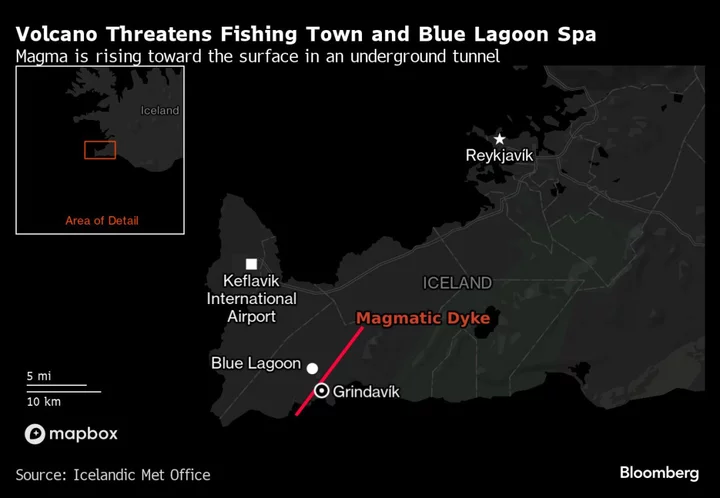
Iceland Plays Down Aviation Threat From Pending Eruption
Iceland sought to temper concerns that an imminent volcanic eruption would wreak widespread havoc on European aviation as
2023-11-14 15:52
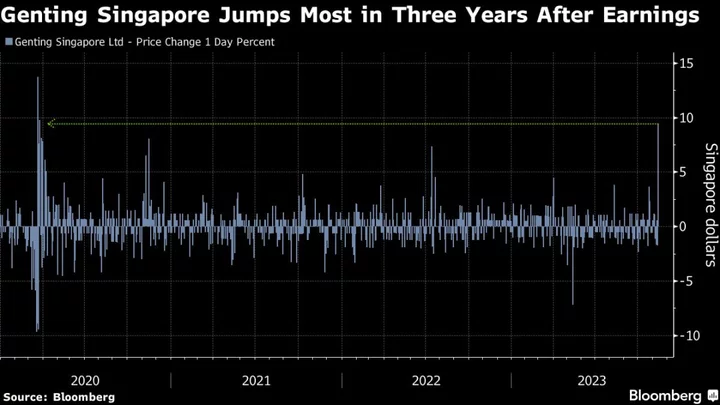
Genting Singapore Soars Most in Three Years on Earnings Beat
Genting Singapore Ltd. jumped the most in more than three years after the casino operator posted better-than-expected third-quarter
2023-11-14 15:26
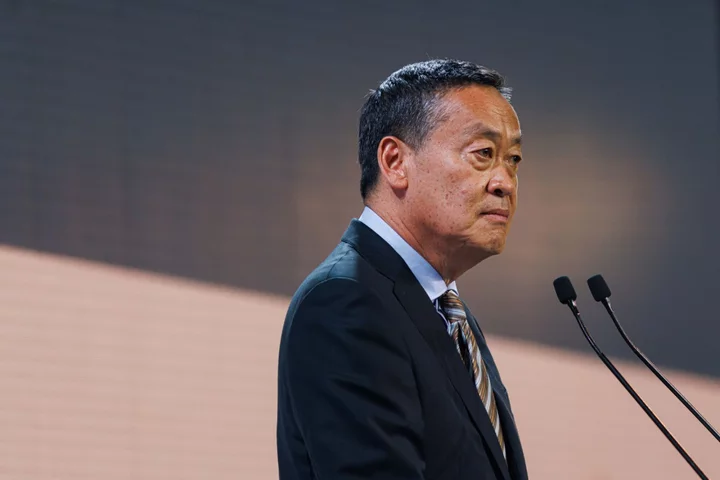
Thai PM Denies Chinese Police Patrol Plan After Public Outcry
Thailand’s Prime Minister Srettha Thavisin said there was no plan to invite Chinese police officers to patrol local
2023-11-14 15:24
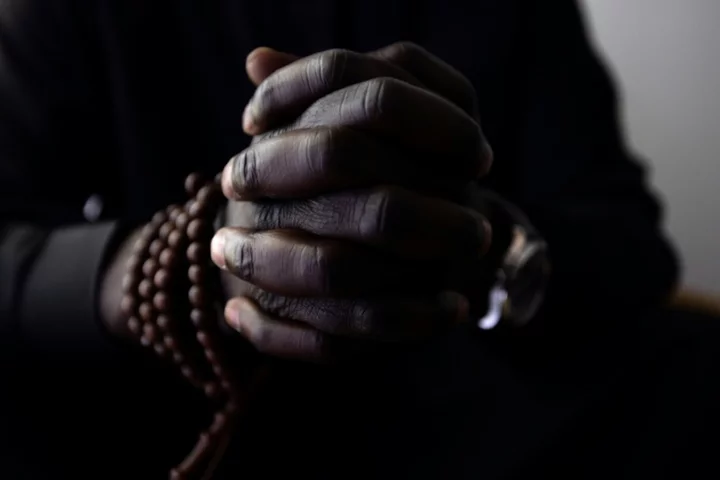
Pogba, potions and impotence: the secret world of witch doctors in France
"There's a lot of jealousy in football," said Sheikh Issa, holding up a piece of bark and a bottle...
2023-11-14 14:56

What does Saturday Kitchen’s Matt Tebbutt cook at home?
“I love cheese, especially blue cheese, and I love fritters,” says Matt Tebbutt. The Saturday Kitchen chef – who has teamed up with ProCook – combines crispy parmesan fritters with Roquefort spinach for a decadent dish. Parmesan fritters with Roquefort spinach Serves: 4 Ingredients: Vegetable oil, for deep-frying 100ml full-fat milk 50g unsalted butter 100ml water 125g plain flour 1 tsp English mustard powder 2 medium free-range eggs 1 tsp chopped thyme leaves 280g parmesan, grated 200g baby spinach 3½ tbsp crème fraîche 3½ tbsp double cream 100g Roquefort cheese Pinch of freshly grated nutmeg Method: 1. Preheat the oil in a deep-fat fryer to 180C, or half-fill a deep, heavy-based pan with oil set over medium-high heat. The oil is hot enough when a small cube of bread dropped into the oil turns golden brown in 40-50 seconds (or you can test the temperature using a probe thermometer). 2. Put the milk, butter and water in a large saucepan and bring to the boil. As soon as it comes to the boil, add the flour and mustard and beat together with a wooden spoon or large whisk to make a thick paste. 3. Take off the heat and allow to cool slightly (if you don’t cool it the mixture may split). Gradually beat in the eggs, thyme and 200 grams of the grated Parmesan. 4. Use a dessertspoon to gently drop each fritter into the hot oil and cook until crisped up and golden. They will take four to five minutes in the fryer, turning frequently. Remove and drain on a plate lined with paper towels and keep warm. 5. Next, heat a large saucepan over a medium heat. Add the spinach and cook until wilted down, then add the crème fraîche, cream and Roquefort cheese and cook until the cheese is melted. Finish with the freshly grated nutmeg. 6. To serve, layer the spinach and cheese mixture onto a serving plate, top with the yummy fritters and sprinkle over the remaining grated Parmesan. Recipe from ‘Weekend’ by Matt Tebbutt (Quadrille, £22). Traditional fish soup Tebbutt shares his take on a traditional fish soup – full of mussels, cod, scallops and whatever seafood you fancy. Serves: 4 Ingredients: 1kg of mixed sea fish – on the bone if possible, but just fillets is fine. Any crab claws or shells or prawns in shell would be a great addition 1 white onion 1 head of garlic, broken into cloves 1 star anise 1 carrot ½ fennel bulb 3 sticks of celery 2 bay leaves 1 small bunch of thyme 125ml Noilly Prat 2 tbsp tomato purée 400g tin of plum tomatoes 1 pinch of saffron 1 bunch of tarragon For the toppings: 1kg of cleaned mussels in shell 50ml white wine or Noilly Prat 1 bay leaf and smashed garlic clove 1 small sea bass or grey mullet or other British sea fish 200g cod fillet 1 red mullet or gurnard (optional) 2 scallops Method: 1. Start by sweating the veg and aromatics (except the tarragon) in some oil for 15 to 20 minutes, until soft and starting to colour. 2. Add the fish and shells if using, bones and all to the pan and continue to cook for another 10 minutes or so before adding the tomato purée, saffron strands, vermouth or wine, and tomatoes. 3. Cook to a paste then barely cover with water and allow to simmer very gently for 30 minutes. 4. After this time, blitz briefly with a hand blender to get the most out of the fish, before draining in a colander and push as much liquid from the bones as possible. 5. Tip these bones away and now add the tarragon to the stock and boil to reduce. Skim off any fat as you go. Reduce to around half the volume. Taste and season accordingly. 6. Take a dry saucepan with a lid and put onto a high heat. Add the mussels, Noilly Prat, bay and garlic clove, immediately cover with a lid and shake the pan from time to time. 7. After two to three minutes, check all the mussels have opened. Remove from the heat. Tip into a sieve or colander. Allow to cool before picking the meat from the shells. Discard any that don’t open. 8. Now strain this liquor through a fine mesh sieve or chinois and tip into the reduced stock. 9. Fillet the rest of the fish and pan fry these and the scallops on one side, (depending on the thickness). Keep warm. 10. To serve, put some of the cooked fish into the bottom of a serving bowl, and ladle some of the fish soup over the top . 11. For the perfect finishing touch, add homemade croutons and rouille. Coconut bread and raspberry cream “This is more cake than bread, I’d say,” notes Tebbutt. Tebbutt adds: “It’s especially delicious toasted in a dry pan to crisp the edges a little. This works well as a stand-alone brunch treat or as a sweet snack at any time of the day.” Makes: 8-10 slices Ingredients: 370g plain flour 3 tbsp baking powder 1-2 tsp salt 160g caster sugar 80g desiccated coconut 300ml coconut milk 2 large free-range eggs, beaten 1 tsp vanilla extract 75g butter, melted and kept warm For the raspberry cream: 100g crème fraîche 100g mascarpone 1-2 tsp good-quality raspberry jam 150g raspberries, to serve Method: 1. Preheat the oven to 200C/180C fan/400F/gas mark 6. Line a 900g loaf tin approximately 24cm x 14cm with baking paper. 2. Mix together the flour, baking powder, salt, sugar and desiccated coconut in a mixing bowl. Combine the coconut milk, eggs, vanilla extract and melted butter in a jug, mix well, then slowly pour the liquid ingredients into the dry ingredients. Mix well between additions to form a smooth batter. 3. Pour the batter into the prepared loaf tin and bake for 45 minutes to one hour. Allow to cool a little on a wire rack before turning out and slicing. 4. To make the raspberry cream, beat the crème fraîche and the mascarpone in a bowl. Gently mix through a spoonful of the raspberry jam to give a ripple effect. 5. When you’re ready to eat, toast the bread in a dry pan, spread over a little jam and top with the raspberry cream and fresh raspberries. Recipe from ‘Weekend’ by Matt Tebbutt (Quadrille, £22). Matt Tebbutt’s ProCook Kitchen Favourites can be found instore and online at procook.co.uk. Read More From a £22 bag of pasta to £28 sandwich – why do they cost so much? How to host a dinner party for under £2 per portion Three authentic Thai recipes to try at home Move over Nando’s – how chicken restaurants became cool Long live British scran: Three classic dishes for autumn Four delicious ways to use up leftover pumpkin this Halloween
2023-11-14 14:55
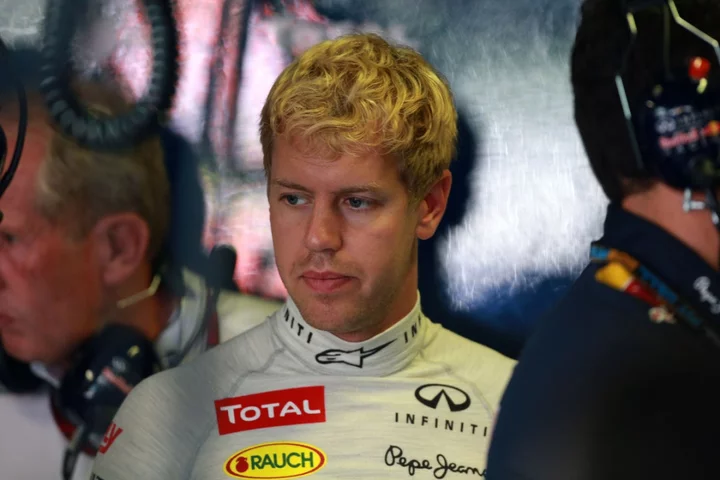
On this day in 2010: Sebastian Vettel becomes youngest ever F1 world champion
Sebastian Vettel rewrote the record books on this day in 2010 after clinching the Formula One drivers’ championship by winning the Abu Dhabi Grand Prix. The German’s success in the season-ending finale saw him claim the mantle of the youngest world champion in F1 history. Vettel took the chequered flag in Abu Dhabi for his fifth victory of the year, and with title rival Fernando Alonso a distant seventh in his Ferrari, it allowed the the Red Bull driver to make sure of his place in the record books. At 23 years and 135 days, Vettel beat the mark of Lewis Hamilton – who finished second in Abu Dhabi ahead of McLaren team-mate and outgoing world champion Jenson Button – by 166 days. It guaranteed Vettel the title by four points from Alonso, with Red Bull completing a championship double after winning the constructors’ crown a week previously in Brazil. Vettel was clearly in tears on his slow-down lap as he attempted to speak over the in-car radio, with team principal Christian Horner proclaiming: “Sebastian Vettel you are the world champion!” Vettel would go on to win four successive Formula One world titles before seeing his reign ended by Hamilton in 2014. Read More Lewis Hamilton ‘counting down days’ to end of season after another poor race Max Verstappen thwarts Lando Norris’ bid for first F1 win with sprint victory On this day in 2015: Susie Wolff ends her bid to get on an F1 starting grid
2023-11-14 14:26

Big bang: Dutch firm eyes space baby
Climate crises, nuclear Armageddon, or a sudden meteor strike -- it's clear humanity could do with Planet B. But first we need to learn to reproduce safely in...
2023-11-14 11:23
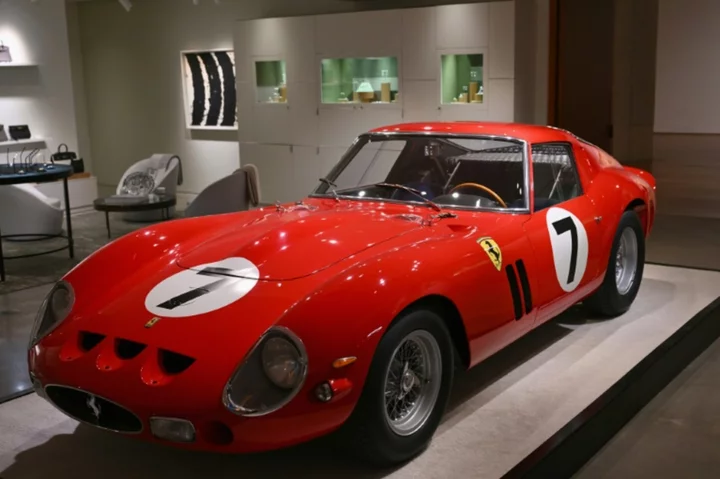
1962 Ferrari auctioned for $51.7 mn in New York: Sotheby's
A 1962 Ferrari 250 GTO sports car sold for $51.7 million in New York on Monday, making it the second most expensive car ever...
2023-11-14 09:29
You Might Like...

London celebrates its 'fearless' young fashion designers

Everything we know about 'Only Murders in the Building' Season 4

Drought drains Brazilian Amazon residents reliant on waterways
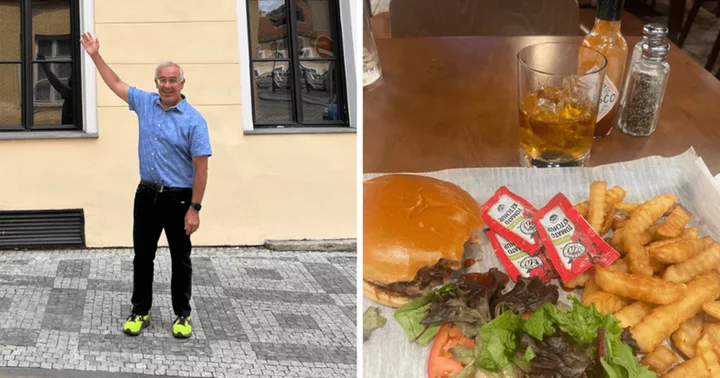
Who is David Brooks? Internet schools possibly drunk man over post on $78 burger at Newark Airport

Libraries take to TikTok to build community and new cultural relevance
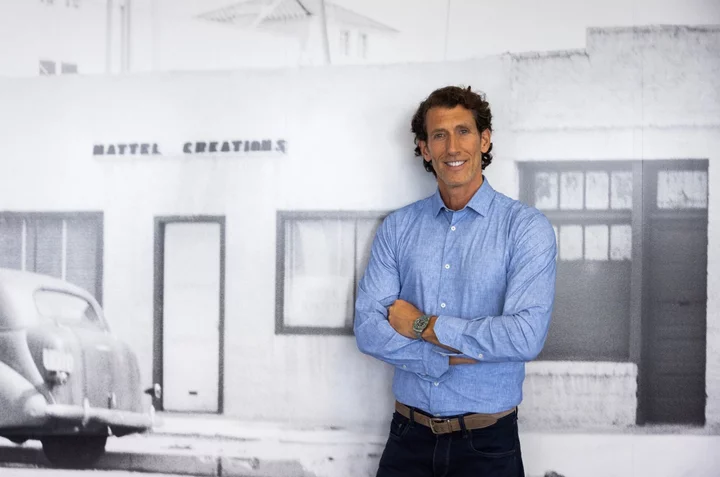
Gap Names Mattel’s Richard Dickson as New Chief Executive Officer
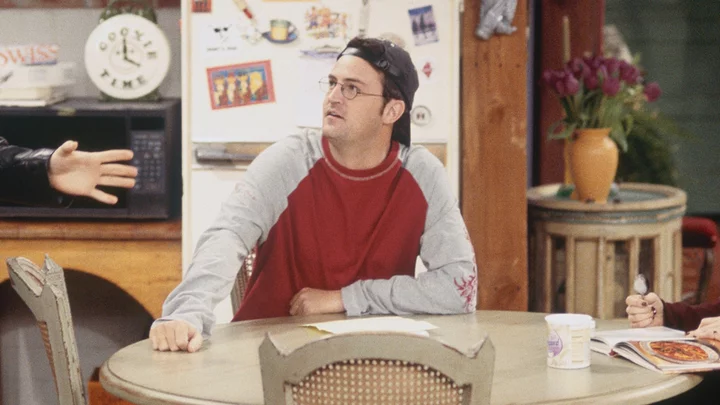
Max adds tribute to Matthew Perry before every 'Friends' season

Tinder reveals how to create the ultimate profile
